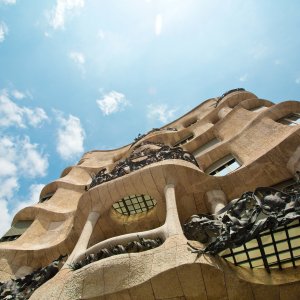For many people Lanzarote is their favorite Canary Island, basically because the landscape seems from out of this world.
Black hills like basalt, rocky plains dotted with some greenish lichen, palm trees. They say Lanzarote looks like the moon, if the moon was black.
As a contrast to so much blackness, the houses are of a gleaming whitewashed white, where only the blue or green frames of doors and windows break the monotony of colors, depending on whether they are houses on the coast or in the interior. The care for aesthetics is one of the most striking aspects of the island.
In this article you will find the best things to do in Lanzarote, a pioneer island in protecting the environment from the tourist siege, promoted by local artist César Manrique (you will see him mentioned a lot in this article, since he largely defined the Lanzarote we nowadays know).
Let's go!
1. Timanfaya National Park
If you can only visit one place in Lanzarote, it HAS to be the Timanfaya National Park. The so-called fire mountains are an area that is intact since the 18th century. At that time, there was a great volcanic eruption that originated the current landscape of the island.
We know all the details of that event thanks to Andrés Lorenzo, the priest of the village of Yaiza at that time, who wrote in his diary, in great detail, everything that happened in the mountains next to his village.
The result of that geological phenomenon is the landscape we see now, hardly modified by human hands.
The visit to Timanfaya National Park begins at the visitor center, where a bus takes you through the landscape. No one can access the Timanfaya National Park on their own, although there are a couple of trails along the borders of the park that you can sign up to hike with a guide.
These trails allow you to see the landscape at your own pace, feel it up close without the cold bus window getting in the way, and have the guide available to answer all your questions. And, to top it off, it's free. However, you have to book your visit as soon as possible from the official website, since there are few spots.
You can finish your visit with a great meal, since in the visitor’s center there’s one of the most ecological kitchens in the world: they roast the chickens with the heat that comes from the earth. It is amazing to see the grill, and the result is delicious.
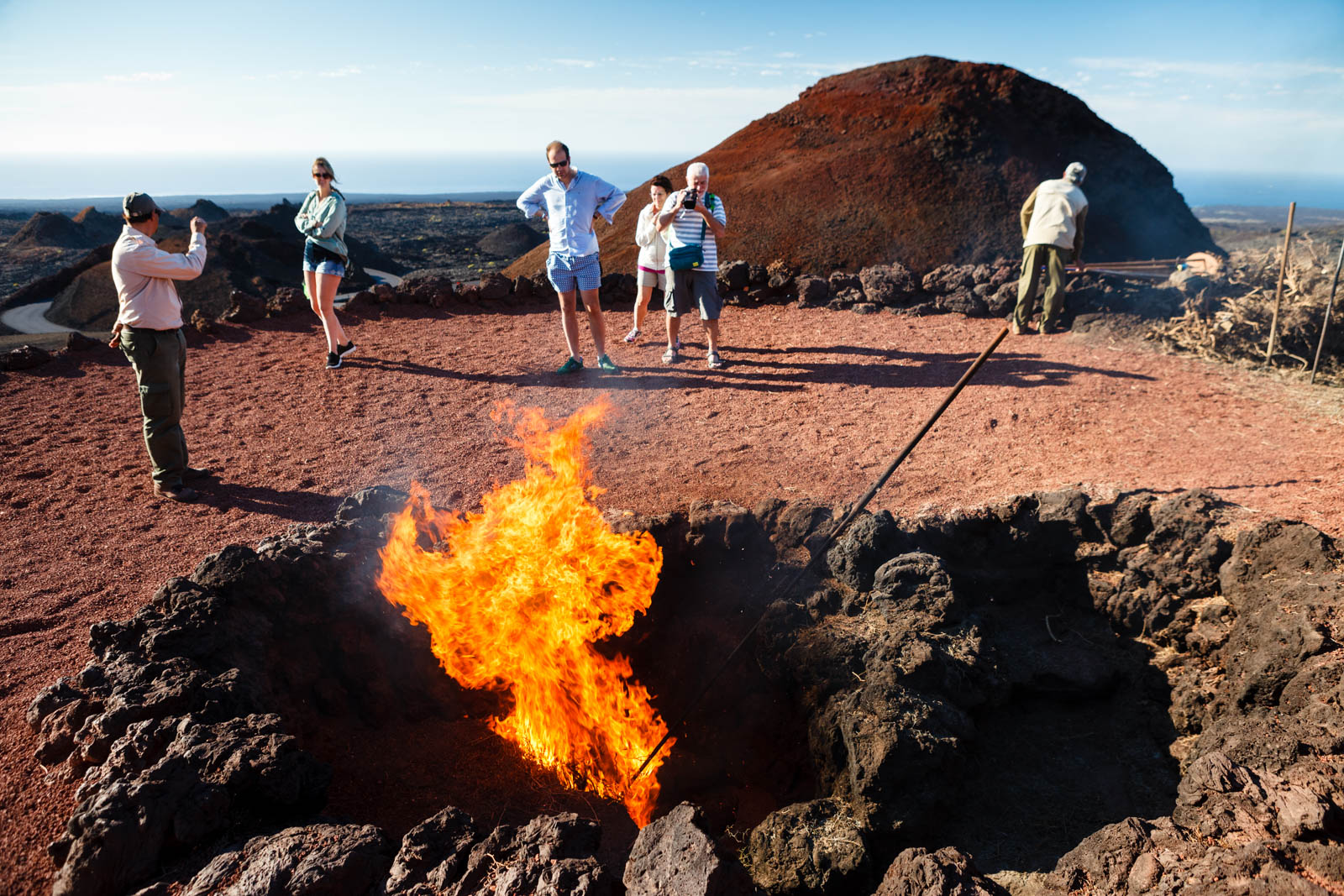
2. Cactus Garden
Of all the monuments to visit in Lanzarote, such as the Jameos del Agua or the Cave of Los Verdes, the Cactus Garden continues to impress locals and visitors for its great diversity.
It is surprising to see so many different species of cacti in the same place, especially considering that cacti grow in the most arid areas of the planet, where water is hard to come by and the heat is scorching. Even so, life makes its way, as reflected in this small botanical garden created with great care by César Manrique.
A very interesting visit, even if you are not a botany enthusiast.
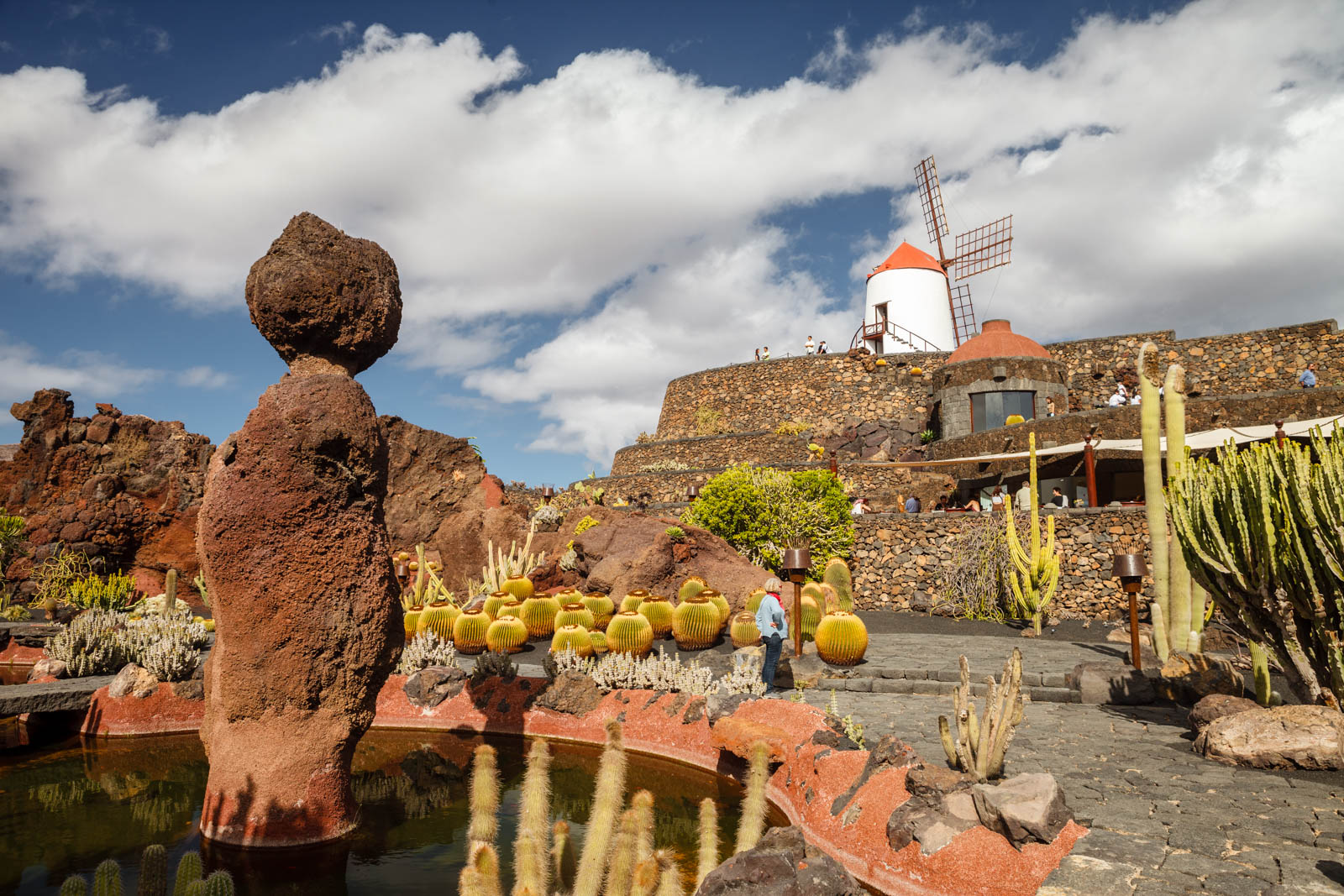
3. Rio Viewpoint (Mirador del Río)
The viewpoints are always a good choice. To be able to see a place from the heights, or to have a great view in front of your eyes where you can see for miles around is one of the sensations that fills the traveler the most. The number of stories that have happened in that place, the number of sunsets that one can admire.
Of all the viewpoints of Lanzarote, the most spectacular is Mirador del Rio, where you can see the entire island of La Graciosa and the rugged north coast of Lanzarote.
The viewpoint building is beautiful, like everything designed by César Manrique, although if you do not want to enter, you can have the same views from the path next to it. By the way, the wind here is very strong, so dress warmly.
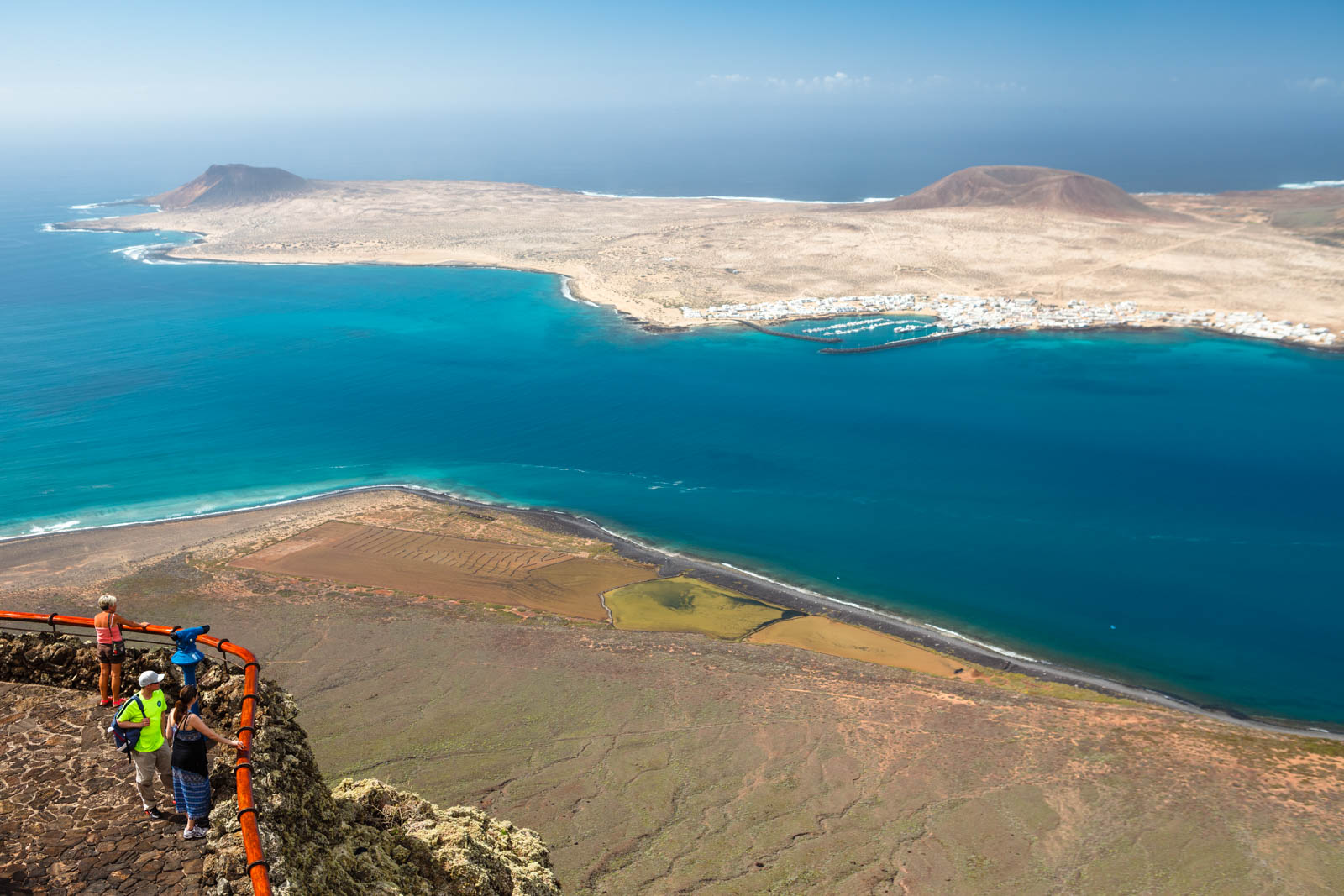
4. Discovering the island of La Graciosa by bike
As you have seen from Mirador del Rio, the island of La Graciosa seems completely flat, until you dare to cycle around it.
This is one of the best experiences you can have in the Canary Islands, although you need to be in good physical shape if you want to go around the whole island in one day. If you don't trust your legs so much, you can always rent an electric bike, or shorten the route.
The essential places in La Graciosa are Caleta de Sebo, the starting point of any visit; the beach of Las Conchas, more for watching than for bathing due to the strong waves; and the arches of Los Caletones, where there are some extraordinary geological forms whipped by the sea.
If you feel up to it, you can reach the village of Pedro Barba, although you will have to make an extra effort to return to the port.
5. Bicycle tour through La Geria
If you like cycling, besides La Graciosa, there is an excellent itinerary to get to know the most rural side of Lanzarote on two wheels .
Many high-level athletes, such as Formula 1 drivers or cyclists, come to Lanzarote to train on the bike, as the gusty wind is said to be good for strengthening muscles.
This cycling tour has as its main passing area the Geria, the vineyard terrain full of stone walls that protect the vines from the wind. In addition to training your body, you will enjoy a unique landscape at a pace more in keeping with the scenery than if you go by car.
6. Surfing in Famara
You are on an island, so of course you want to practice some water sports, such as paddle or surfing. If you are of those who enjoy the last one, you can’t miss Famara Beach, a paradise of big waves and a beautiful scenery.
Keep in mind that this island is in the Atlantic Ocean, so the waves are strong, and sometimes practicing these sports it’s even forbidden because of how dangerous it can be. When the sea is suitable for sports, dozens of people congregate in the water to enjoy the good waves, and perhaps, later, some local fish in the teleclub of the nearby villages.
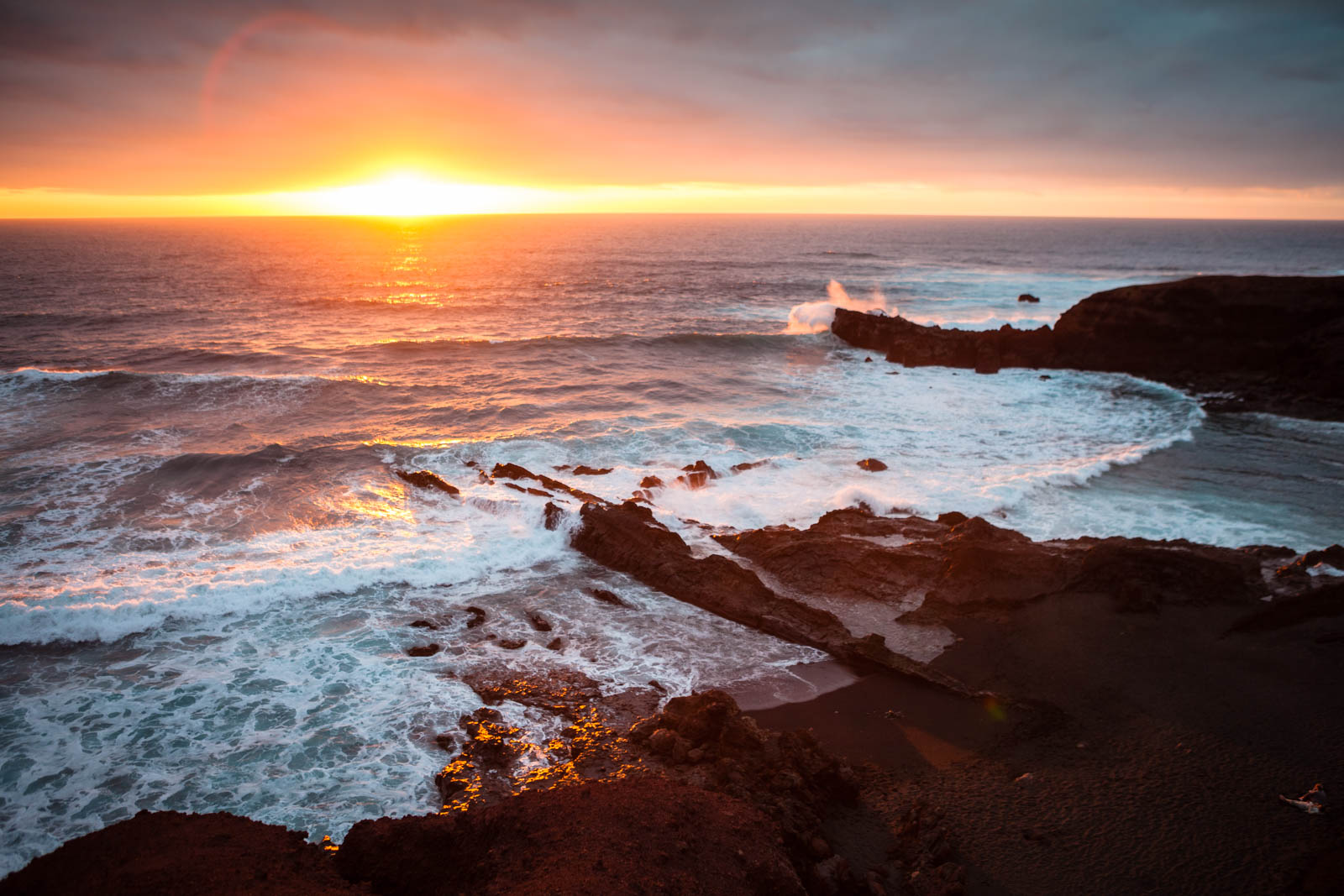
7. The legacy of Manrique
The great architect of many of the places of Lanzarote was the local artist César Manrique, precursor of sustainable tourism development.
Thanks to him there are great tourist works, such as the Jameos del Agua or the Mirador del Río, although the best way to understand his vision of the world and how he liked his beloved island to develop is by visiting his most personal works: the César Manrique Foundation and his house in Haría.
The artist lived in both spaces, now museum centers, and by knowing this places you can learn how he combined art with the conservation of the environment.
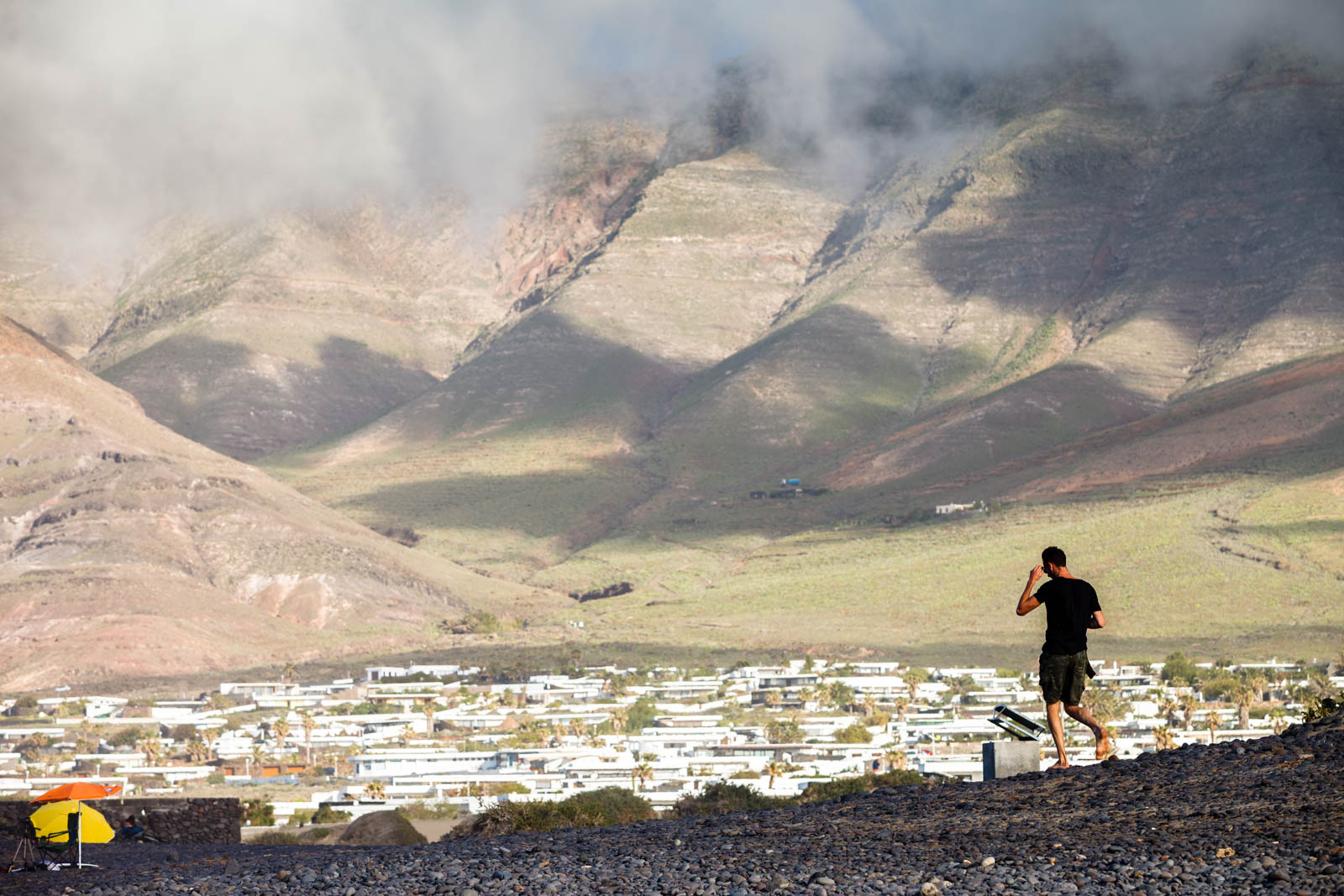
César Manrique was an environmentalist who took action when necessary, paralyzing the creation of a large hotel complex of many floors in the south of the island. If you look, only in the capital Arrecife there are buildings of more than two floors. The rest of the island continues to take care of the aesthetics so as not to lose its essence and to be able to continue living for many years in such an arid and, at the same time, beautiful environment.
Before leaving, don't forget to check out all the sustainable options for activities, accommodation, restaurants and much more on our website!













